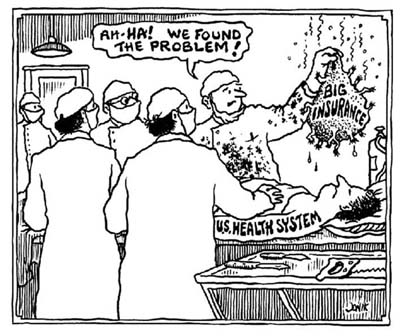After what seems like forever, Congress finally passed a bill for health care reform. President Obama's main goal for the early part of his mandate seems to reach ruke.Pitanje, however, what is in this bill? What really changes people will experience as a result of all this controversy? Or are all these political games with little real impact? Read on for a summary of the actual changes in health care from the new health reform law.
The most important thing to understand about the reforms is that in stages - most changes do not come into play when President Obama signs the law of the law (which should be Tuesday, March 23, 2009). Changes to activate over the next decade. Here are the main changes and their impact.
Health Reform Bill Contents
Before 2011:
* Small businesses get a tax credit for contributions of new health insurance for employees.
* Children can not be excluded from receiving health insurance services for pre-existing conditions.
* The new health insurance exchanges to come online in 2014, the current uninsured people with pre-existing conditions will not be able to buy subsidized health care coverage.
* Companies can use temporary health "Reinsurance Program" to provide benefits for retirees 55-64 years old.
* To be diagnosed with the new disease is no longer grounds for losing health insurance coverage. In addition, insurance carriers will not be able to cap your life, health benefits, and their ability to limit the annual coverage will be limited.
* Currently Medicare prescription drug gap between approximately $ 2,700 and $ 6,200 worth medicine.Reforma laws and make $ 250 rebate to Medicare beneficiaries who fall into this hole and provides a gap closure.
* age to which children will be able to use the parent's health coverage is increased to 26-19 from the previous or college graduation.
* Indoor tanning services with ultraviolet light to see the 10% tax on their services, starting first July 2009
in 2011:
* big pharmaceutical companies will be taxed on the basis of further market share.
* General surgeons and primary care physicians will see a 10% increase in bonus payments.
* Medicare Advantage payments frozen at 2010 levels and will eventually come more in line with traditional Medicare payments.
* States will have a new program to offer in home care for poor patients who otherwise would require hospital visits.
* Employees will be able to see the value of its health benefits on W-2 forms.
* free annual wellness visit and personalized prevention plan analysis will be offered free to all Medicare beneficiaries. Any additional new health plans will be required to offer such services as the ultimate preventive care at little or no cost to Medicare patients.
in 2012:
* At each level, hospitals, physicians, and Medicare, programs and controls are implemented to reduce readmission rates, improve quality outcomes for patients and encourage more accountability of health workers.
in 2013:
* high income tax payers (> $ 200,000 for singles,> $ 250,000 for joint filings) will have their salary increase of 1.45% to 2.35% sales tax, and pay 3.8 % tax on income from capital.
* Taxpayers can claim medical expenses on items of tax returns at 10% rate instead of 7.5%. Older taxpayers may continue until 2017.
* non-public medical device sales tax will be taxed further to 2.9 %.
* Program began in 2012 and still are enlarged.
in 2014:
* Employers with> 50 employees will be fined $ 2,000 for each employee after the number 30 if the employer does not provide health insurance.
* Most people will be fined if you do not have health insurance, either through employer or privately. Tax incentives to purchase health care through the exchange will be offered to those with incomes up to 400% of poverty level.
* Similar to 2011 pharmaceutical sales tax, in 2014 the health insurance companies will be taxed according to market share.
* It will no longer be legal to exclude anyone from receiving health insurance for having pre-existing medical conditions.
* State-level health insurance exchange opens, which allows individuals and organizations to shop around for cheaper health insurance.
in 2015:
* Medicare moves to reward quality care rather than quantity of services.
in 2018:
* higher cost of employer health insurance plans ("Cadillac" health insurance) are taxed, with exceptions for the first $ 27,000 for families and $ 10,000 for individuals.

No comments:
Post a Comment